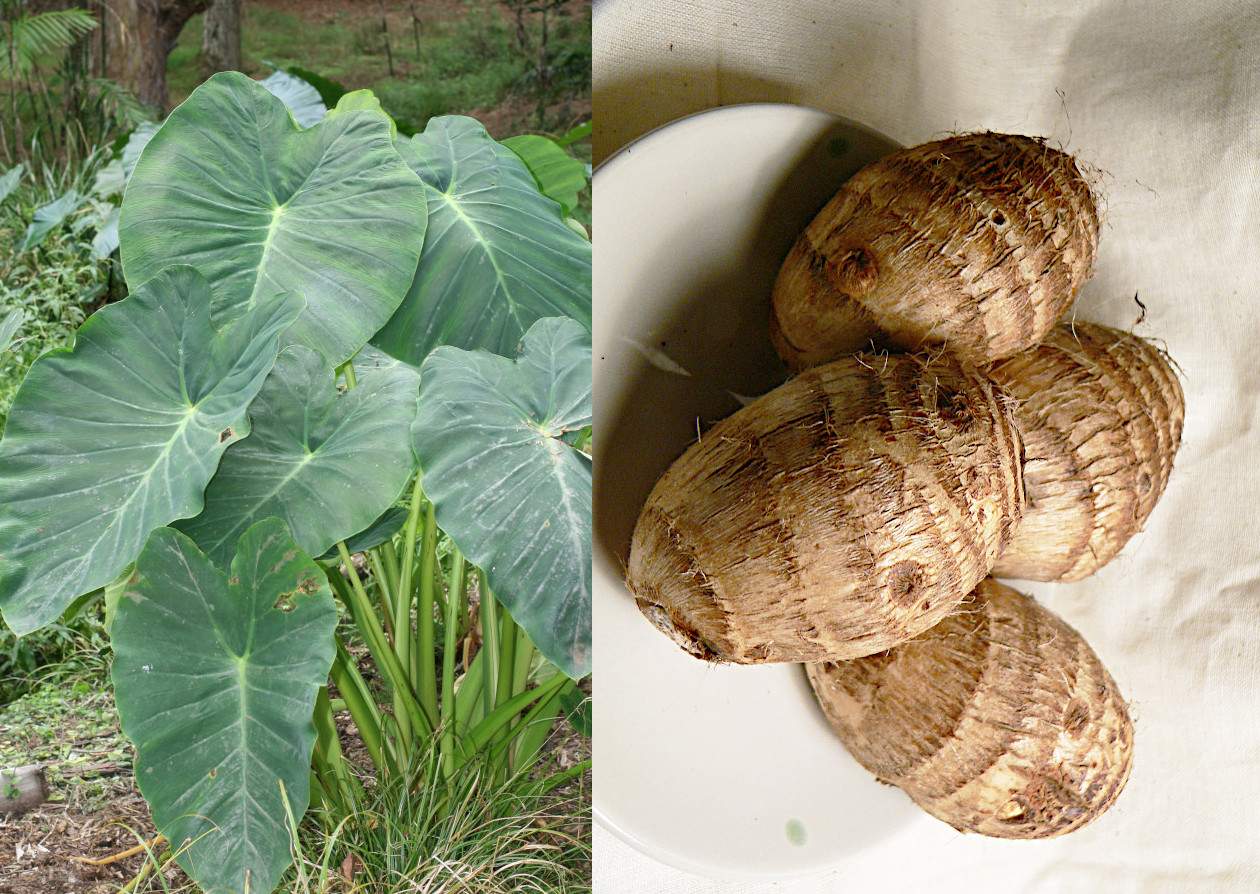Colocasia esculenta (L.) Schott syn. Arum esculentum L., Arum colocasia L.; Caladium colocasia (L.) W. Wight; Caladium esculentum (L.) Ventenat - Araceae - taro, Taro, Wasserbrotwurzel
Perennial, tropical plant primarily grown as a root vegetable for its edible, starchy corms; leaves 2-3 or more, triangular-ovate, 25-80cm long, dark green above and light green beneath, petiole up to 1m high.
„The rhizomes, petioles, and inflorescences are used as a vegetable… Widely cultivated usually near farmhouses or in water fields; also naturalized or perhaps native in wet places in forests, valleys, swamps, wastelands, and at watersides.“ efloras.org
„Taro is believed to be one of the earliest cultivated plants.. thought to be native to Southern India and Southeast Asia, but is widely naturalised.“ Taro (wikipedia)
„Lipu taro is one of the most famous varieties of taro in China with strong aroma… vacuum simultaneous steam distillation and extraction and gas chromatography-mass spectrometry were applied to extract and analyze the volatile components, combined with gas chromatography-olfactometry, aroma extraction dilution analysis, odor activity value, aroma recombination and omission experiments to determine the key aroma-active compounds in cooked Lipu taro. Results revealed that 18 odorants, such as 2-acetyl-1-pyrroline (2-AP), (E,E)-2,4-decadienal, methional, nonanal, 1-octen-3-one, etc., were identified as the key aroma-active compounds, and they could recombine the taro aroma at detected concentration. Among these key odorants, 2-AP exhibited the most significant roles in cooked Lipu taro. 2-AP was confirmed to be originated from Maillard reaction, as the addition of Maillard reaction precursors (L-proline and D-glucose) could increase its content significantly.“
[Zhou, Xiatao, et al. „2-Acetyl-1-pyrroline originated from Maillard reaction is the key odorant of cooked Lipu taro.“ International Journal of Gastronomy and Food Science (2024): 100968]



